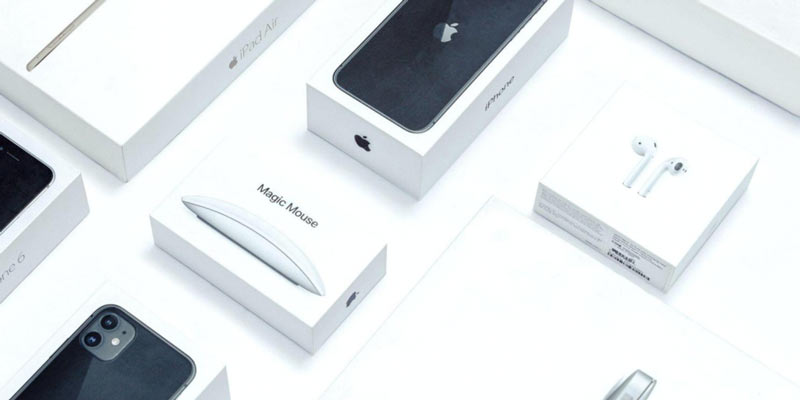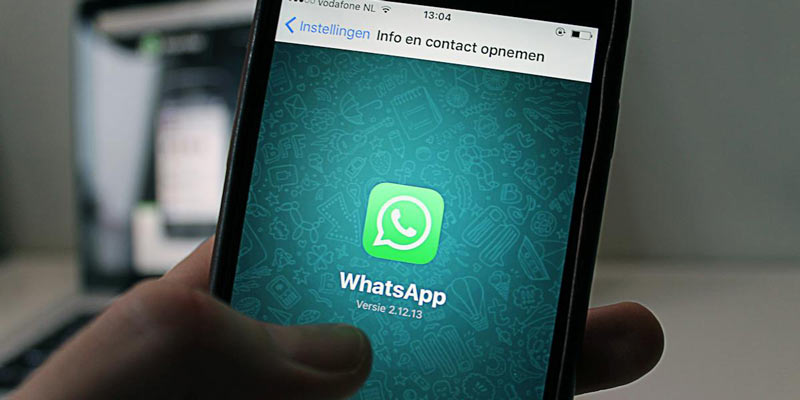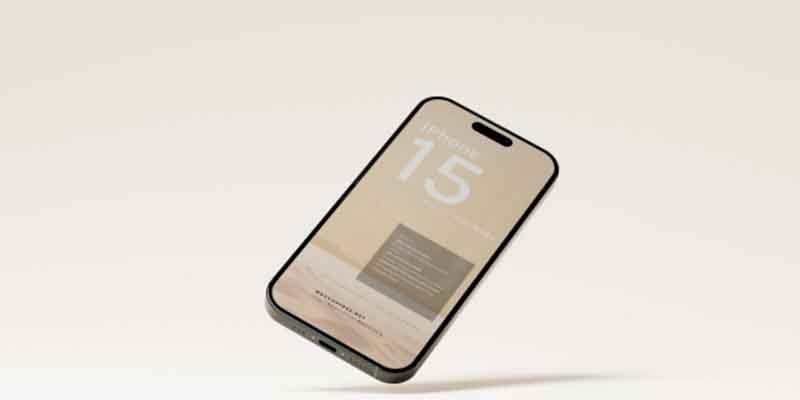When unboxing a brand-new iPhone with the charger plug and sometimes the earphones on hand, imagine the excitement you feel, eagerly anticipating its sleek design and cutting-edge features. Yet, in a surprising twist, Apple’s latest iPhones arrive without a key component: the charger plug.
Why doesn’t Apple include charging plugs with new phones anymore?
In a move that raised eyebrows and stirred debates among tech enthusiasts, Apple made the bold decision to exclude charger plugs from its latest iPhone packages. This decision to differ from the traditional way has left many thinking about the reason for this decision. Let’s take a look at the reasons behind Apple’s choice and explore the implications it carries.
Officially Stated Reasons
Environmental Goals
Apple has outspokenly talked about its commitment to environmental sustainability as a giant tech company, with reducing electronic waste (e-waste) as a primary motivation.
By omitting charger plugs from new iPhone packages, Apple believes it encourages consumers to utilize existing charger plugs they already own, minimizing unnecessary duplication and ultimately reducing the overall environmental impact. Apple claims its decision has reduced e-waste by an estimated 59,000 metric tons (65,000 US tons) per year.
Smaller Packaging
Another factor driving Apple’s decision is the desire to streamline packaging and reduce its environmental footprint. By eliminating charger plugs from iPhone boxes, Apple can create smaller and lighter packages, thereby decreasing carbon emissions associated with transportation.
Cost Savings
Even if environmental considerations are at the forefront of Apple’s messaging, it is no surprise that additional economic factors are at play. Not including charging plugs likely results in cost savings for Apple in terms of production expenses and shipping costs. Experts estimate Apple could save up to $6 per phone by excluding chargers, translating to billions of dollars annually.
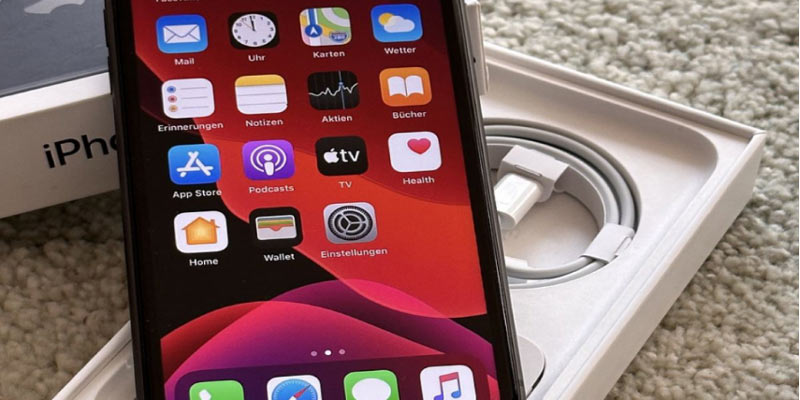
Profit Margins
Critics have suggested that Apple stands to benefit financially from selling iPhone charging plugs separately at premium prices. By offering charger plugs as optional accessories, Apple can capitalize on consumer demand and bolster its profit margins.
Environmentalism or Profits?
Critics Question the Real Motives Behind the Decision by Apple Not to Include iPhone Charging Plugs Anymore
Overstated Environmental Impact
Skeptics argue that Apple’s claims of substantial e-waste reduction for the sake of environmental benefits are overstated. Concerns have been raised regarding the overall carbon footprint, considering factors such as increased packaging for individual charger plug sales and the potential need for consumers to purchase charging plugs separately.
Inconvenience for Users
One of the most vocal criticisms of Apple’s decision is the inconvenience it poses to consumers. Users who still need compatible charger plugs will now have to purchase them separately, which will lead to added expense and hassle.
Impact on Affordability
There are concerns that the exclusion of charging plugs from iPhone packages could indirectly contribute to higher phone prices, thereby making Apple products less accessible to certain demographics.
A combination of environmental goals, cost considerations, and potential profit motives drives Apple’s decision to remove charging plugs from new iPhone packages. While the move has sparked controversy and garnered criticism, Apple remains steadfast in its commitment to sustainability and innovation, even if it means shaking up long standing industry norms.
How do you choose a charging plug? What are the standards?
Now, as a consumer, you may wonder how you can navigate the world of charger plugs and charging accessories as Apple continues its trend of excluding charging plugs from new iPhone packages. With an array of options available, understanding the standards and choosing the right charging plug is essential to ensure optimal performance and safety for your device.
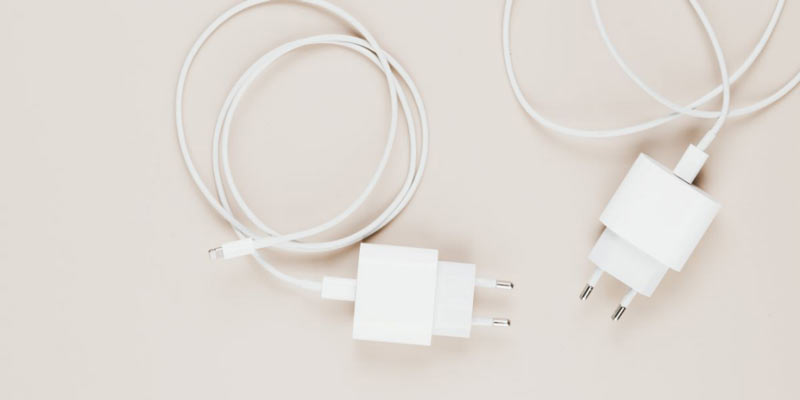
Standards Matter: Understanding Compatibility
When selecting a charging plug for your iPhone, it’s essential to consider the established standards to guarantee compatibility and efficiency. iPhones utilize a Lightning connector for charging and data transfer. However, for fast charging capabilities, it’s advisable to go for a charging plug that supports USB-C to Lightning connectivity. This configuration enables speedier charging speeds and facilitates compatibility with a broader range of devices. Making sure your charger plug aligns with these standards is vital to maximize charging efficiency and avoid compatibility issues.
Safety First: Avoiding Pitfalls
While it may be tempting to opt for cheaper, uncertified charger plug types, doing so can pose significant risks to both your phone and personal safety. Cheap knockoff charger plugs may lack the necessary safety features and fail to meet regulatory standards, increasing the likelihood of overheating, electrical surges, or even fires. Always choose reputable brands known for their excellent quality and reliability to safeguard your device and yourself and ensure that the charging plug bears appropriate certifications, such as UL or CE markings.
Exploring Third-Party Options: Finding Value
While Apple’s official charger plugs are renowned for their quality, they often come with a premium price tag. Fortunately, consumers can access a wide selection of third-party charger plug types that offer compatibility and quality comparable to Apple’s official charging plug, often at more affordable prices. Many reputable brands, including Anker, Belkin, and Aukey, produce certified charger plug types that adhere to stringent safety and performance standards. These third-party options provide consumers with a cost-effective alternative without sacrificing reliability or functionality.
Making the Right Choice
In a world where the absence of charger plugs in new iPhone packages has become the norm, selecting the right charging accessory is more important than ever. By adhering to established standards, prioritizing safety, and exploring third-party options, you can ensure that your charging experience remains efficient, reliable, and hassle-free. So, whether you’re in need of an iPhone charger plug or seeking a charging solution for your other devices, remember to choose wisely and invest in quality to power up with confidence.
If not, the official iPhone charger plugs, what other charger plug types are there?
Consumers now have to explore alternative options to power up their devices because of Apple’s decision to exclude charger plugs from its new iPhone packages.
While the absence of official charging plugs may look scary, a variety of charger plug types are available to meet your charging plug needs. Let’s look into some of these innovative alternatives.
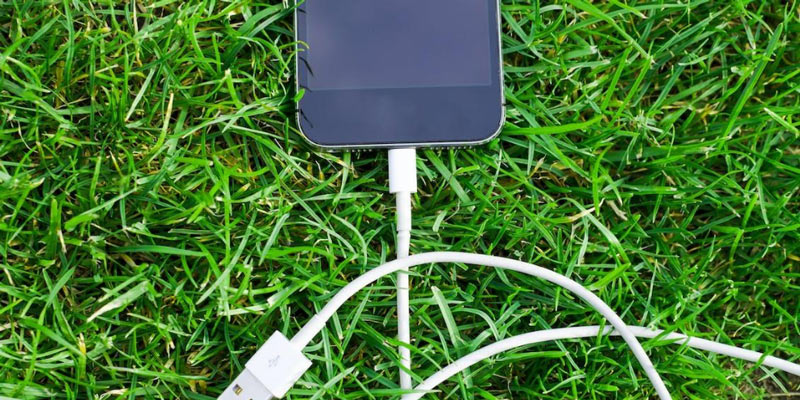
Wireless Charging: Cutting the Cord
One of the most popular alternatives to traditional wired charging is wireless charging. iPhones support Qi wireless charging technology, allowing users to charge their devices without the need for a physical connection to a charger plug.
Simply place your iPhone on a Qi-compatible wireless charger pad and let the power flow wirelessly. This convenient and clutter-free charging method offers an effortless charging experience, perfect for those who value simplicity and convenience.
Universal Charger Standards: Paving the Way for Compatibility
Initiatives exist to establish universal charger plug standards in an effort to streamline charging across various devices. The aim is to create a single standard that all phones, including iPhones, can adhere to, reducing the need for proprietary charger plugs.
Even though the widespread adoption of these standards is still uncertain, the potential benefits in terms of compatibility and convenience are promising. Imagine a future where one charger plug can power up all your devices, regardless of brand or model. How convenient and efficient would that be?
Exploring Other Options: Adapting to Your Needs
In addition to wireless charging and universal charger standards, many other charging plug types and options are available to suit your preferences. From fast chargers to portable power banks, the market is teeming with innovative solutions designed to keep your devices powered up and ready to go. Whether you’re looking for a compact charger plug to keep in your pocket or a high-capacity power bank for extended use on the go, there’s something for everyone.
Embracing Innovation in Charging Technology
While Apple’s decision to exclude charging plugs may have sparked debates, it has also paved the way for innovation in charging technology. From wireless charging to universal charger plug standards and beyond, the world of charging plugs is evolving to meet the needs of modern consumers. Whether you prefer the simplicity of wireless charging or the versatility of universal standards, rest assured that there’s a charging plug out there to power up your iPhone and keep you connected wherever you go.
Final Words
So, as we bid farewell to the days of bundled charging plugs in iPhone boxes, let’s embrace this new chapter in charging technology with open arms and an adventurous tech-savvy spirit. While Apple’s decision may have initially raised eyebrows, it signals a shift towards sustainability, innovation, and consumer empowerment.
With wireless charging pads, universal charger standards, and a treasure trove of other options waiting to be explored, the world of charging plugs is ripe for discovery. So, set forth without hesitation, dear reader, for your iPhone will always be powered up and ready for whatever adventures lie ahead regardless of the decisions of a giant tech company because, with humanity’s advancing technology, a solution will always be within reach, whether it’s through innovation or simply plugging in your new version of a charging plug.
